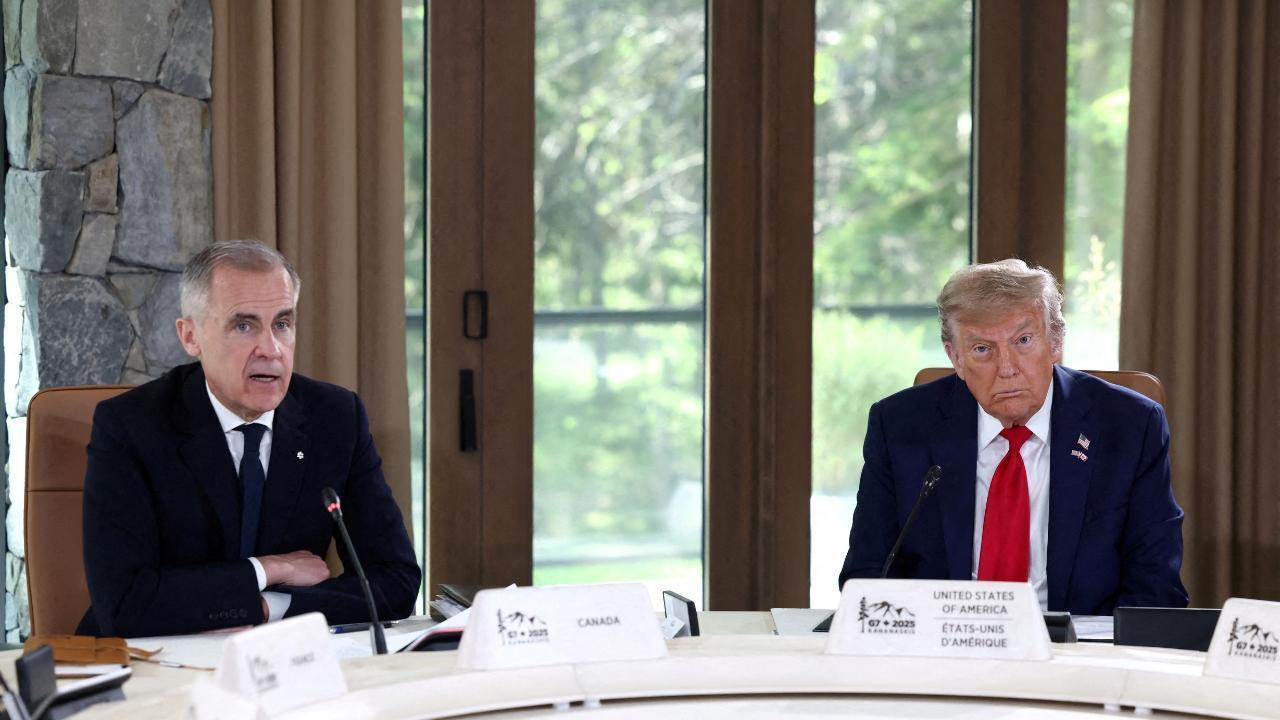
Post by : Raina Al-Fahim
Photo:Reuters
In a decisive move to ease tensions with its closest economic partner, Canada has lifted tariffs on certain U.S. goods, signaling a fresh willingness to return to the negotiating table. This development has captured the attention of business leaders, policymakers, and trade analysts across North America, as it represents a potential turning point in cross-border relations that had recently grown tense.
Trade disputes between Canada and the United States are not new. Over the decades, the two nations have faced disagreements over lumber, dairy, steel, aluminum, and energy. However, tariffs imposed in recent years had created significant uncertainty for businesses on both sides of the border. By removing these barriers, Canada is sending a message: dialogue and cooperation are more important than confrontation.
Historical Background of Canada–U.S. Trade
Canada and the United States share the world’s largest trading relationship. Every day, billions of dollars’ worth of goods and services cross the border. From Canadian energy exports to American agriculture and technology products, the two markets are tightly interwoven.
Their cooperation goes back to the Canada–U.S. Free Trade Agreement (1988), which later evolved into NAFTA (North American Free Trade Agreement) in 1994, and more recently, USMCA (United States–Mexico–Canada Agreement) in 2020. These agreements removed most barriers to trade, encouraged investment, and created millions of jobs.
However, despite this strong framework, disputes have never completely disappeared. For instance:
Why Did Canada Remove Tariffs Now?
Canada’s decision to drop tariffs was not taken lightly. To understand it, we must look at three main factors:
Economic Pressure
Canadian exporters had been facing rising costs due to tariffs. Many small and medium-sized businesses feared losing access to the crucial U.S. market. By lifting tariffs, the Canadian government hopes to support struggling industries and boost investor confidence.
Political Strategy
By taking the first step, Ottawa is positioning itself as a mediator rather than an aggressor. Canada believes goodwill gestures can build trust and reduce tensions. Politically, this style of diplomacy has long been part of Canada’s tradition in international affairs.
Global Trade Climate
The global economy is already dealing with challenges: supply chain disruptions, energy fluctuations, and shifting geopolitical power balances. Canada recognizes that trade wars harm stability. Lifting tariffs sends a signal to other partners worldwide that Canada is committed to cooperation, not division.
The U.S. Response: What Could Happen Next?
The success of Canada’s move depends greatly on how Washington responds. If the U.S. welcomes the gesture and engages in constructive talks, the path to stronger trade agreements could open quickly. However, if U.S. leaders see this as a sign of weakness, the risk is that further demands might follow.
American domestic politics will play a big role. With U.S. elections always shaping trade rhetoric, leaders tend to prioritize the interests of local industries. Farmers, manufacturers, and energy producers all have different views on Canada’s role in U.S. trade.
Thus, in the weeks ahead, observers expect close monitoring of:
U.S. commitments on Canadian energy imports.
Agricultural trade balances.
Supply chain security for both nations.
Impact on Canada’s Economy
For Canada, dropping tariffs brings both opportunities and risks.
Positive Impacts:
Risks:
The Canadian Chamber of Commerce has welcomed the decision, arguing that cross-border trade stability is worth more than the short-term protective benefits of tariffs. However, labor unions worry that without proper safeguards, Canadian jobs may be at risk.
The Bigger Picture: North American Unity
Beyond immediate trade concerns, this move carries symbolic weight. North America faces growing competition from global powers like China and the European Union. Strengthening internal cooperation is crucial if Canada, the U.S., and Mexico want to remain globally competitive.
Tariff disputes weaken this unity by creating uncertainty and division. On the other hand, open trade supports stronger supply chains, shared innovation, and societal trust. By removing tariffs, Canada is essentially reminding its neighbor that unity is more valuable than friction.
International Reactions
Canada’s step has caught the eye of global economies. The European Union, which often faces similar tensions with the U.S., sees Canada’s decision as a constructive model. Meanwhile, Asian economies view it as a signal that North America is trying to stabilize at a time of global volatility.
International investors, too, respond positively when trade barriers come down. Stock markets often see tariff removal as a sign of reduced risk. For an economy like Canada’s, which relies heavily on trade, such investor confidence is vital.










Traffic Restrictions Near IGI Stadium Ahead of A.R. Rahman Concert
Delhi Traffic Police announced restrictions and diversions near Indira Gandhi Indoor Stadium due to

Kim Woo-bin and Shin Min-a Get Married After 10-Year Relationship
South Korean stars Kim Woo-bin and Shin Min-a got married in a private Seoul ceremony after dating f

Rohit Sharma to Play First Two Vijay Hazare Trophy Matches for Mumbai
Rohit Sharma will play the first two Trophy matches for Mumbai, led by Shardul Thakur, with a mix of

Riyadh Airport Experiences Delays and Cancellations on Friday
King Khalid International Airport faced flight delays and cancellations due to maintenance and diver

Kavem Hodge Scores Second Test Century Against New Zealand
Kavem Hodge scored his second Test century as West Indies reached 381-6, avoiding follow-on against

Bangladesh on Alert After Youth Leader Killing Triggers Violence
Bangladesh steps up security in Dhaka after the killing of youth leader Sharif Osman Hadi triggers p